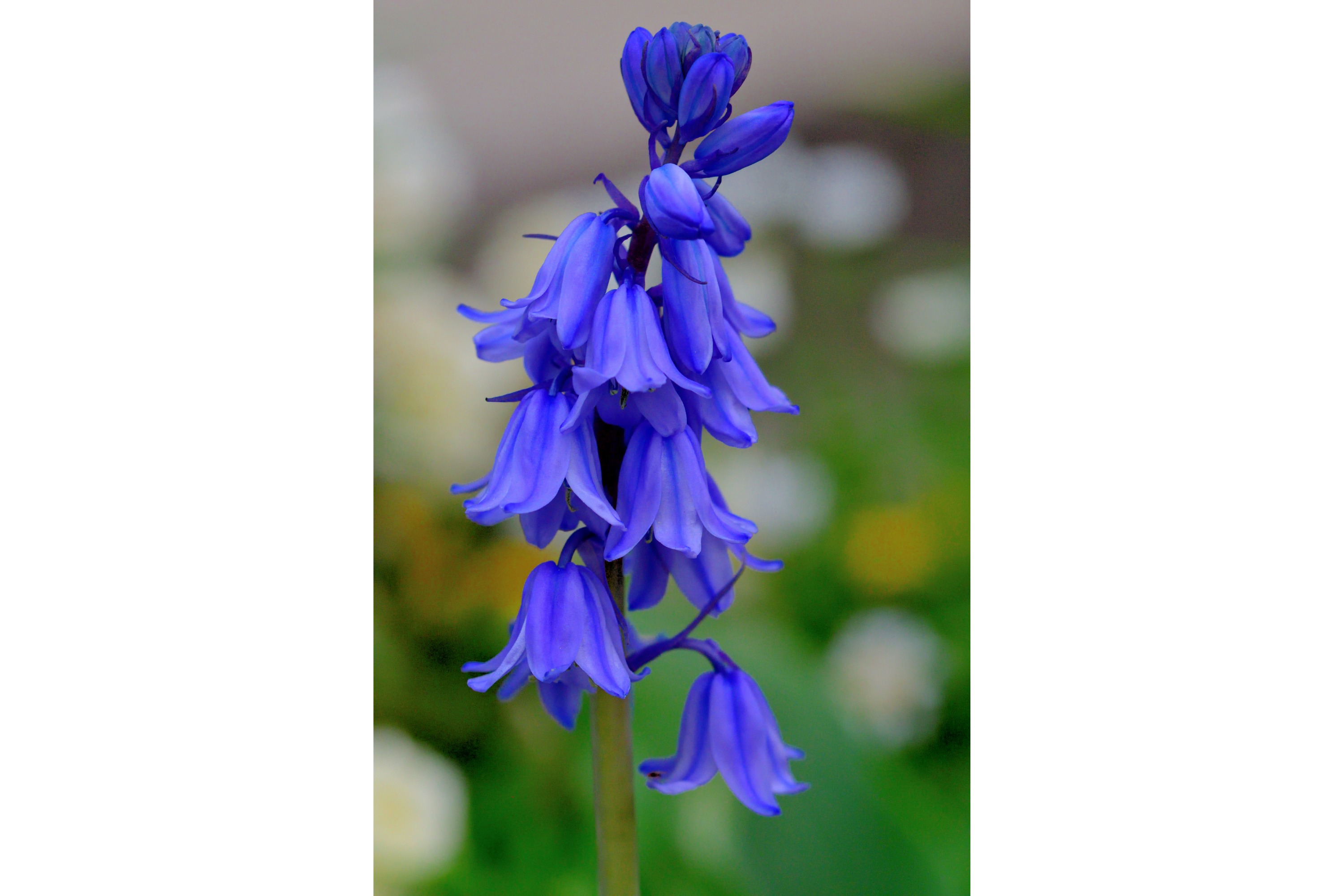Spanish bluebell
(Hyacinthoides hispanica)

Description
Hyacinthoides hispanica, commonly known as the Spanish bluebell, is a perennial bulbous plant belonging to the Asparagaceae family. It is native to the Iberian Peninsula in southwestern Europe but has been introduced and naturalized in other parts of the world, including the United Kingdom, where it has become invasive in some areas. Physical Characteristics Hyacinthoides hispanica typically grows to a height of 20-50 cm, with leaves that are narrow and strap-shaped, measuring 30-50 cm long and 0.5-1.5 cm wide. The flowers, which bloom in the spring, are bell-shaped and typically blue in color, although they can also be pink or white. Each flower is about 1-2 cm long and is carried on a stalk that is about as long as the flower. The bulbs of Hyacinthoides hispanica are small and elongated, measuring about 2-3 cm in diameter. They are covered in a brown, papery skin and are usually planted in the autumn, although they can also be planted in the spring. The bulbs should be planted about 10 cm deep and 10 cm apart in well-drained soil. Habitat and Distribution Hyacinthoides hispanica is native to the Iberian Peninsula in southwestern Europe, where it grows in woodlands, scrubland, and rocky areas. It prefers moist, well-drained soil and partial shade. The plant has been introduced and naturalized in other parts of the world, including the United Kingdom, where it has become invasive in some areas. In the UK, Hyacinthoides hispanica is often found growing in gardens, parks, and woodland areas. It has also been known to spread to natural areas and can outcompete native species. The plant is considered a threat to biodiversity in some areas and is listed as a Schedule 9 plant under the Wildlife and Countryside Act 1981, which makes it illegal to plant or allow the plant to grow in the wild. Uses and Benefits Hyacinthoides hispanica is primarily used as an ornamental plant in gardens and parks. Its attractive blue, pink, or white flowers and narrow, strap-shaped leaves make it a popular choice for spring displays. The plant is easy to grow and care for, and its bulbs can be dug up and divided every few years to produce more plants. In addition to its ornamental value, Hyacinthoides hispanica has also been used in traditional medicine. The plant contains alkaloids and saponins, which have been shown to have antifungal and antibacterial properties. In some cultures, the bulbs have been used to treat respiratory and digestive disorders. Conservation Status Hyacinthoides hispanica is not considered threatened or endangered in its native range. However, in some areas where it has been introduced, it is considered invasive and a threat to biodiversity. In the United Kingdom, the plant is listed as a Schedule 9 plant under the Wildlife and Countryside Act 1981, which makes it illegal to plant or allow the plant to grow in the wild. Conclusion Hyacinthoides hispanica, or the Spanish bluebell, is a beautiful and easy-to-grow plant that is popular in gardens and parks around the world. Its attractive blue, pink, or white flowers and narrow, strap-shaped leaves make it a favorite for spring displays. However, in some areas where it has been introduced, it is considered invasive and a threat to biodiversity. As such, it is important to be mindful of the plant's potential to spread and to follow local regulations regarding its cultivation and use.
Taxonomic tree:







